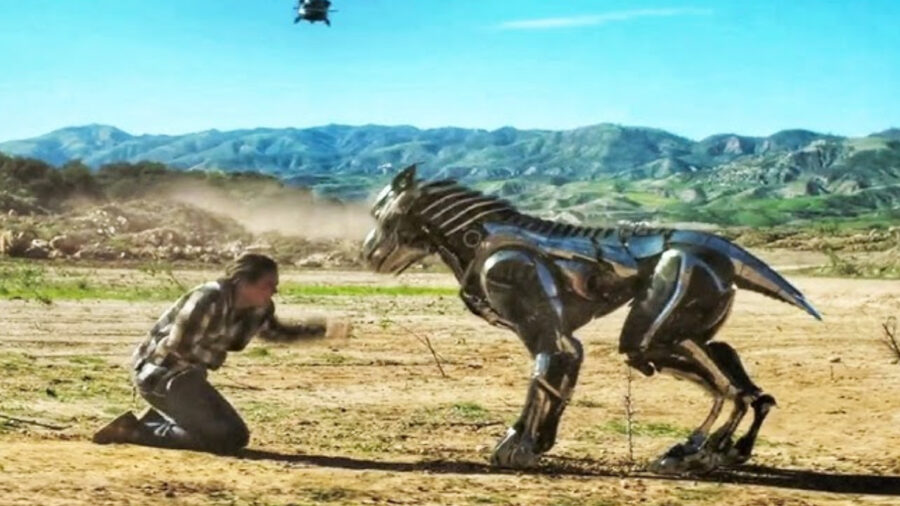[ad_1]
Warfare expertise noticed a serious developmental leap throughout each World Wars, and unmanned drones have been round for simply as lengthy; the primary unmanned aerial car, the Kettering Bug, was truly deployed in 1918. Although it noticed restricted use in the course of the conflict, it was a stepping stone in direction of trendy unmanned aerial automobiles (UAVs). Nevertheless, as if synthetic kill-birds aren’t sufficient, the current growth in expertise resulted within the creation of precise, robotic canines of conflict—a robotic canine military—which are actually deployed to Ukraine.
Have a look for your self:
The robotic canine military was truly equipped by Robotic Alliance, a British firm, and the person items themselves aren’t autonomous, although we suspect that the creation of such fashions isn’t far behind, given the strides in AI applied sciences. As a substitute, all thirty of those mechanized puppies are individually remote-operated by military technicians and symbolize a strolling model of the ever-present aerial drones. Their objective within the Russia-Ukraine battle is to smell out Russian troopers—a determine of speech; the robots don’t have “sniffing” sensors and find booby traps.
When lined by a camouflage paint scheme and a camouflage blanket, items of the robotic canine military can’t be detected.
Models of the robotic canine military are supposed to discover the within of buildings, trenches, woodlands, and all different areas which are inaccessible to flying drones. In accordance with the robotic canine military specs, the doggies can run as much as 9 mph, which is the operating velocity of a leisure runner (jogging is just about 4-6 mph), on a five-hour-long battery life, and a variety of as much as two miles. Moreover, its onboard information may be immediately destroyed if any of those items are captured by an opposing drive to forestall the enemy from gaining any info.
Their objective within the Russia-Ukraine battle is to smell out Russian troopers—a determine of speech; the robots don’t have “sniffing” sensors and find booby traps.
Every particular person unit prices round $4400 to $8800, relying on the mannequin and the complexity of its setup, and when lined by a camouflage paint scheme and a camouflage blanket, items of the robotic canine military can’t be detected. This is applicable to each visible detection and detection utilizing thermal imaging, which suggests quite a bit contemplating that the cruel winter environments of the realm are likely to make thermal sign detection a lot simpler.

The suppliers of the robotic canine military, nevertheless, are safety firms that present a variety of safety companies, in addition to navy coaching and drone surveillance and safety. In different phrases, they’re not robotic producers, and the robots they’re supplying to Ukraine are literally Chinese language-made Unitree Go2 Execs, that are quadrupedal equal of DJI quadcopters. They’re environment friendly, high-spec machines which are simply out there to anybody at a comparatively low value.
In accordance with the robotic canine military specs, the doggies can run as much as 9 mph, which is the operating velocity of a leisure runner, on a five-hour-long battery life, and a variety of as much as two miles.
Now, it’s vital to notice that these little robotic canine military machines are literally geared up with some relatively highly effective {hardware}, and it’s fully attainable that the variations delivered to Brit Alliance—who in flip equipped them to Ukraine—are literally modified with customized software program to raised match navy purposes. And other than being scouts, they will additionally carry payloads of as much as 9 kilos, which means carrying ammo or different provides over the battlefield—but it surely’s solely a matter of time earlier than somebody begins equipping them with weaponry.
[ad_2]
Source link
